




Why Are Herbs Important in Evs Studies?
Have you ever wondered where the mint in your favourite mint dip comes from? In our daily lives, we see a variety of plants of different shapes and sizes. While some are big, some are tiny. There are five primary types of plants: trees, shrubs, herbs, creepers and climbers.
We all are familiar with fruits and vegetables, but we only know a few things about herbs. Herbs are very short plants and are smaller than shrubs. One of the important herbs facts is that they have green, soft, stems which can easily be bent. Let’s learn more about herbs ahead!
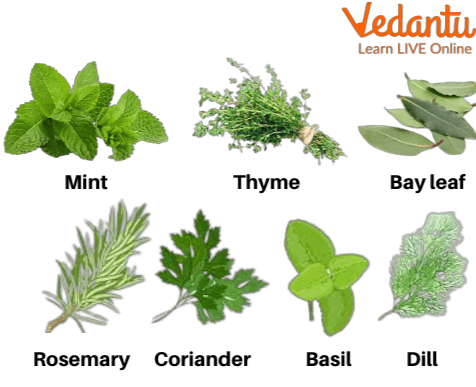
Different Types of Herbs
What are Herbs?
Herbs are short plants with green, delicate and tender stems. They may have no or fewer branches. There are different varieties of herbs present in our nature. Some are used in cooking, some have medicinal properties, and some are used in the cosmetic industry. The plants that belong to the category of herbs are tomato, basil, wheat, grass, etc.
Various Types of Herbs and Nutritional Facts About Herbs
Let us now learn about some of the popular herbs and also nutrition facts about herbs:
Coriander
Coriander is also called Chinese parsley or cilantro. Its leaves can be used as herbs, and it is highly aromatic. Coriander seeds are dried and are also used as a spice. Coriander grows best in well-drained soil and full sun and has long tap roots.
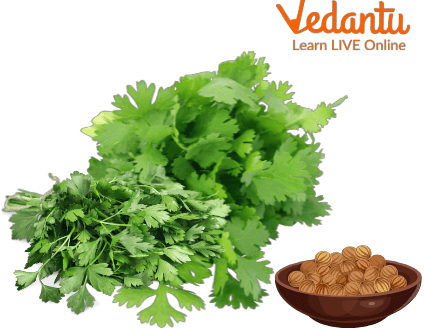
Coriander Leaves
Basil
Basil leaves are solid, long and have pointy ends. These come in various varieties and are most commonly used in cooking recipes. Fresh basil leaves have more flavour than dried leaves. They are used in making pesto and pasta sauces, in medicines and more.
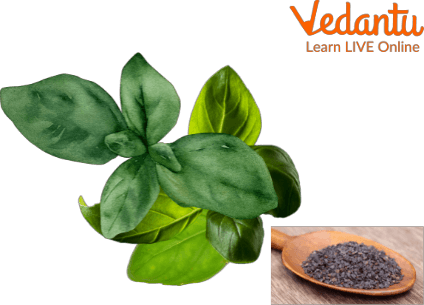
Basil Leaves
Oregano
Many people love to have their pizzas with oregano spice. Oregano or wild marjoram has purple flowers and spade-shaped leaves. Oregano is mostly found in tomato-centric recipes, pizzas and pasta sauces.
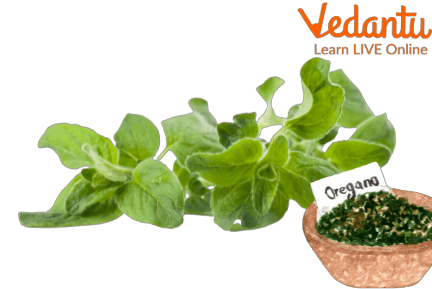
Oregano Leaves
Parsley
Parsley is a biennial plant with bright green leaves. It has two main varieties, curled leaf or common parsley and plain leaf or Italian parsley. Many dishes are served with small finely chopped parsley leaves to add flavour and enhance the presentation of the dish.
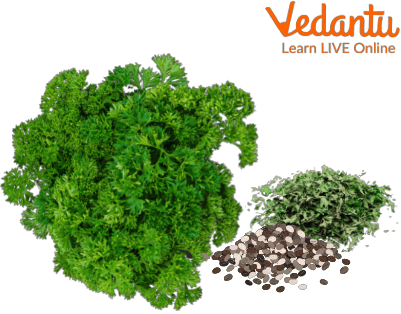
Curly Parsley Leaves
Mint
Mint is one of the famous herbs used in the kitchen. It has a fresh and lemony fragrance. Mint gives a cooling effect; hence it is widely used in the cosmetic industry. There are many varieties of mint, but the most common one has tough stems and bright green, oval and pointed leaves.
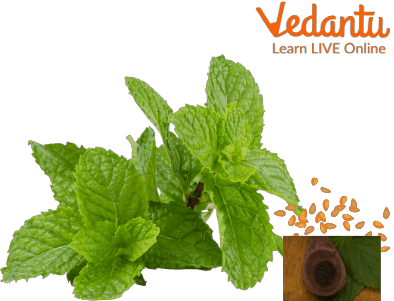
Mint Leaves
Must-know Information About Herbs
Let's now learn about some herb facts and gather information about herbs:
Spice herbs contain natural preservatives; food becomes aromatic if seasoned with these herbs.
Fresh parsley enhances raw food's flavour and is used in dressing salads.
Lavender leaves are said to promote breast growth in males.
Ginger, thyme, oregano and other green leafy herbs are also made of spices and are used all over the world in cooking.
Fresh herbs contain mostly vitamins, minerals and other beneficial elements, making the food tasty as well as nutritious.
Herbs can improve and protect you from various diseases. Cinnamon leaves can stabilise high blood sugar and increase blood circulation in your body.
There are a number of herbs that can increase the burning of calories, including fenugreek, mint and thyme.
Mint is also known as the ‘herbs of hospitality’ by the people of ancient Greece as it was used to cover the smell of hard-packed soil.
Summary
Fragrant, fresh and flavourful herbs are one of the best allies of anyone's cooking journey. Herbs are used as leaves or dried, depending on their use. Not only used by humans but herbs are also used by animals to cure themselves.
In the above article, we learnt about some interesting herb facts. We saw many nutrition facts about herbs and herb plants. Herbs usually do not grow more than a metre in height. Herbs have a shorter life span than trees and shrubs. Herbs have multifunctional properties and are used in a variety of fields like cooking, medications and cosmetics. We hope you enjoyed reading this article.
FAQs on Essential Facts and Uses of Herbs
1. What can happen if we consume too many herbs?
If we consume too many herbs at the same time, it can be fatal to our health. High consumption of herbs at a time can raise blood pressure and increase heart rate.
2. Which herb is considered the most powerful herb?
Turmeric is considered to be the most powerful herb. It is due to the high medicinal properties of turmeric. Turmeric has high antioxidant properties and helps to boost the body’s metabolism.
3. How do herbs reproduce?
Herbs reproduce through a technique called vegetative propagation. In this technique, a part of the plant is reproduced by either stem cuttings or micropropagation of tissues.
4. Is the banana plant a herb? If so, why?
Yes, the banana plant is considered to be a herb. It is because a banana plant lacks woody tissues, and in this plant, the fruit-bearing stem dies as soon after the growing season.
5. What are some easiest herbs to grow?
Mint, coriander, and basil are some herbs that are very easy to grow. People often grow these herbs in their gardens.









